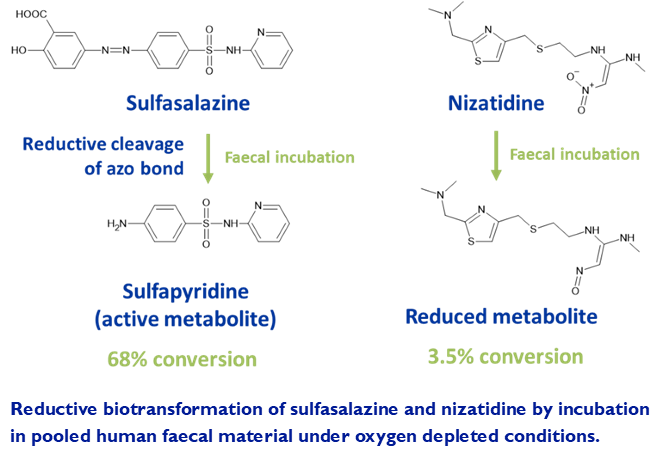MetID of gut metabolites
Microbiota in the human gut are increasingly being considered as a virtual organ which plays a critical role in drug metabolism. The majority are obligate anaerobes from the genera Bacteriodes, Clostridium, Lactobacillus, Escherichia and Bifidobacteria, together with an assortment of other microorganisms.1 The role of this “organ” in the metabolism of some drugs is complicated by variability in the individual composition of microbial species in the gastrointestinal tract, potentially causing differences in the drug response.
As well as activation of pro-drugs, direct microbiome-derived metabolism can lead to deactivation, reactivation through enterohepatic recycling, or biotransformation of a drug to a toxic metabolite.
Reference
Wilson ID, Nicholson JK. Gut microbiome interactions with drug metabolism, efficacy, and toxicity. Transl Res. 2017 Jan;179:204-222. doi: 10.1016/j.trsl.2016.08.002.
Screening and scale-up service
Hypha’s human faecal pool can be used to screen for reduced metabolites of drugs, as exemplified with sulfasalazine and nizatidine. In the case studies illustrated, drugs were incubated in human faecal material derived from several mixed sex donors under oxygen depleted conditions. The reduced metabolites were easily detected by LC-MS.
Human faecal incubations can be scaled up to provide material for purification of metabolites prior to structure elucidation by cryoprobe NMR.
